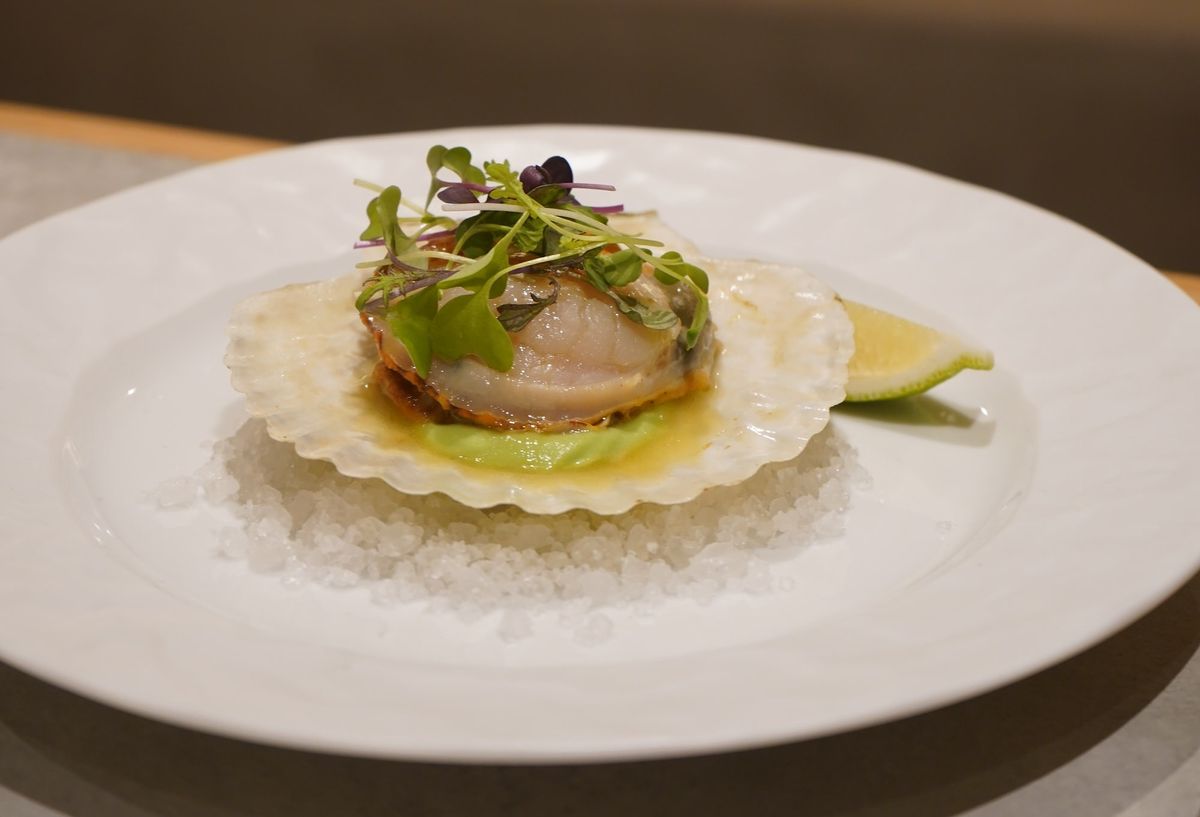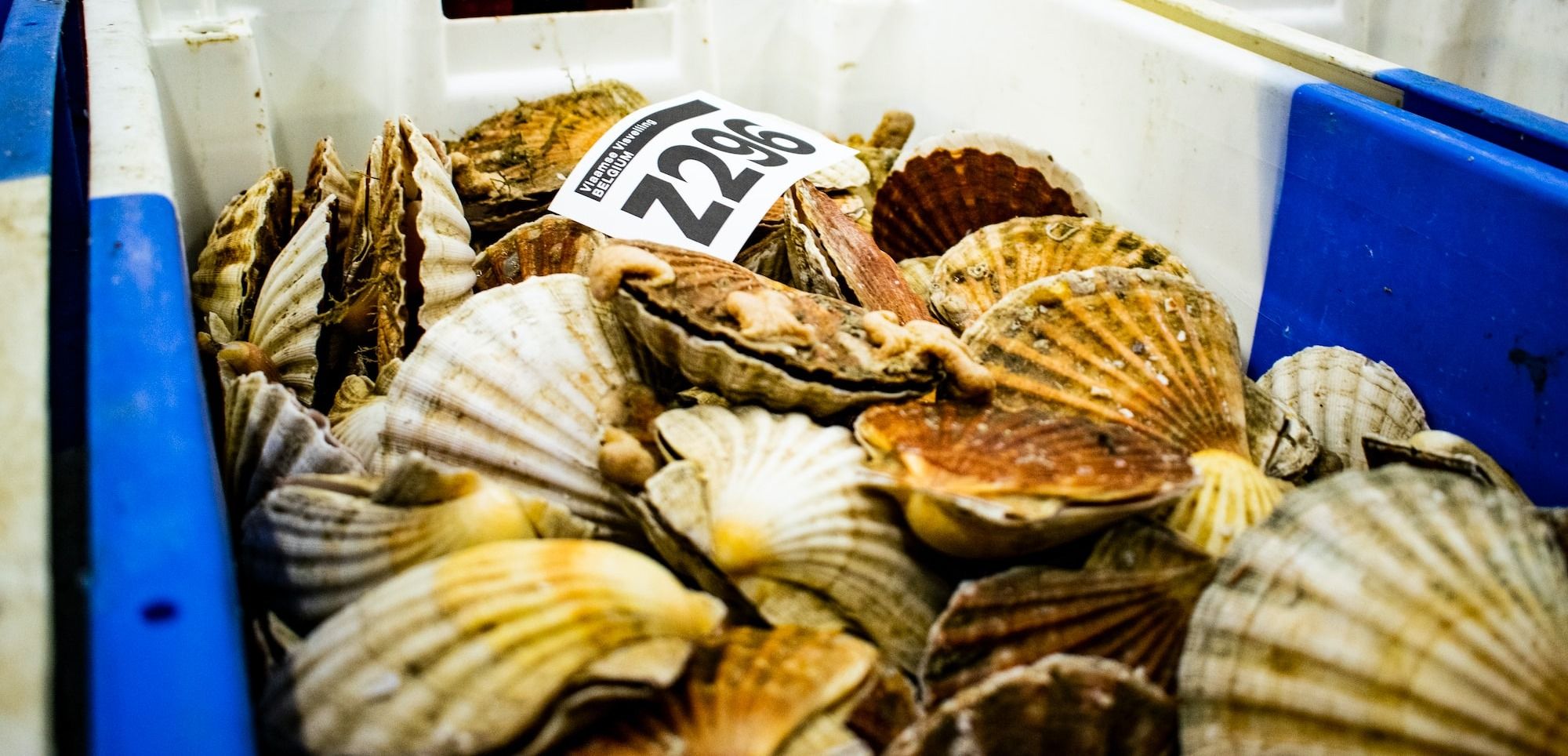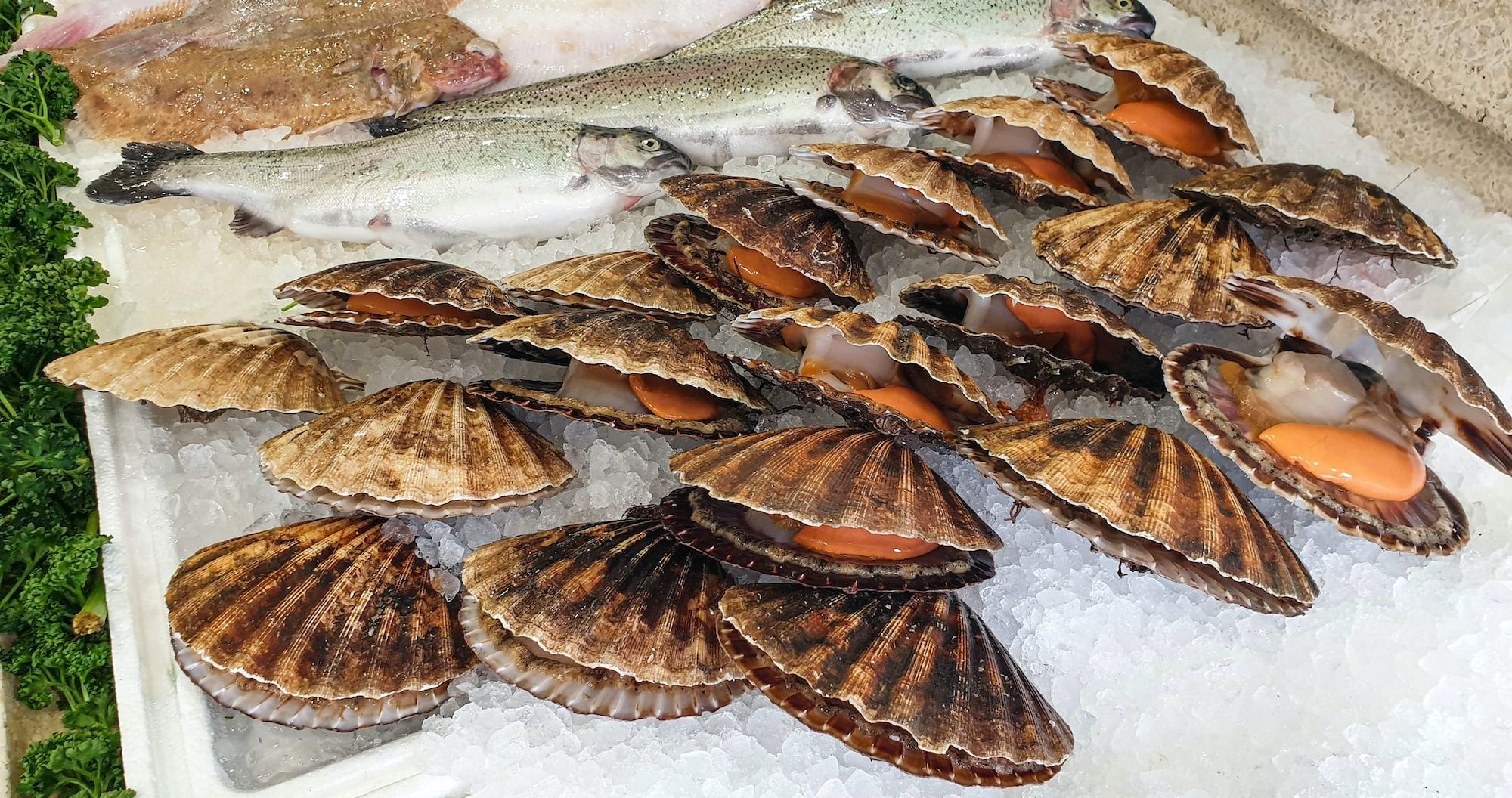Diver Scallops: Diving into Luxury
If you're a seafood aficionado, you've likely savored scallops. Yet, their price point stands out among other seafood. So, what drives the cost of scallops up?

Diver Scallops reign supreme as the priciest scallops on the market, setting a high bar in both cost and quality.
Harvested by hand by skilled divers, these sea scallops are a testament to the meticulous care and effort put into sourcing them.
Unlike other scallops harvested en masse by boats, each Diver Scallop is hand-picked from the ocean floor, ensuring a less gritty and more ecologically sustainable catch.
What is Scallop?
The term "scallop" broadly refers to a variety of marine bivalve mollusks belonging to the Pectinidae family. However, the name also extends to species from related families within the Pectinoidea superfamily, which includes thorny oysters.
The edible treasure of a scallop lies in its eye, or the adductor muscle, which is more developed compared to oysters and clams, thanks to their lively underwater dance.
Their distinctive motion of opening and closing their shells not only propels them through water but also shapes the muscle, making it a delectable bite.

Origin and Habitat
Scallops have ancient roots, with their distinctive shells symbolizing fertility in various cultures. Their emblematic value extended from the era of the Greek goddess Aphrodite to Christian tradition with Saint James.
Residing in both shallow coasts and deeper seabeds worldwide, scallops favor sandy or seagrass beds. They can attach to substrates or remain free, varying by species.
Prolific in cold, clean, and nutrient-rich waters, scallops flourish notably in North America's coastal waters, Japan's Hokkaido region, and New Zealand.
These regions, each offering a unique scallop flavor profile, have become synonymous with scallop fisheries, marking them as a global seafood delicacy.
Popular Varieties of Wild Sea Scallops
The high-priced varieties like wild Weathervane Alaskan, Patagonian, Calico, from shores of Nantucket and Hokkaido scallops are celebrated for their burst of sweetness, lively juicy texture, and exquisitely gentle flavor.
Particularly, Alaskan scallops harvested from the cold, nutrient-rich waters of Alaska or New Zealand are noted for their superior quality and cost.
What is the Price of Diver Scallop?
Diver scallops, prized for their quality, can fetch a price between $40 to $60 per pound. Naturally, finding sea scallops priced below this range is considered a more favorable deal.
Why Is It So Expensive?

Maintaining Freshness is a Challenge
In the Northeast, the journey of diver-caught sea scallops to local eateries is a swift one, ensuring freshness upon delivery.
Unlike other bivalves like clams and oysters, scallops can't keep their shells closed outside water, necessitating prompt shucking aboard the harvesting boat.
Once shucked, their meats are carefully stored in cool containers, ready to grace the kitchens of nearby restaurants or be skillfully handled by shoreside processors upon arrival.
This swift transition from sea to table underscores the fleeting but cherished freshness of scallops.
Any unsold scallops are swiftly frozen to preserve freshness.
Harvested by Diver's Touch
Dredging's gentle alternative, hand-harvesting, allows divers to cherry-pick mature scallops, leaving the young to thrive.
Their underwater vantage reveals hidden scallops among rocky hideouts, enabling the collection of larger, grit-free treasures.
However, this skilled, perilous endeavor, along with the cost of oxygen tanks and extended dives, nudges the price upward.
Scallops Take Time to Reach Legal Size
The journey to a self-sustaining scallop farm stretches over a four-year horizon, as scallops mature to reliable breeding age. This timeline lays the foundation for a farm rich in harvest-ready scallops, while reserving a stock for future breeding.
The threshold of harvest legality is pegged at a shell diameter of 4 inches, a stature attained in three to four years. Although there's no cap on the shell size, colossal scallops often trade sweetness and tenderness for toughness.
Challenging to Farm: The Labor, Time, and Demand of Scallops Cultivation
Farming scallops is a labor-intensive affair, beginning with a nine-month preparation to collect seeds or baby scallops. This extensive prep work sets the stage for a healthy harvest that will eventually meet legal size criteria.
As they grow, scallops require regular cleaning to rid them of algae and bacteria, enhancing their flavor and cooking attributes. The process, though time-consuming, is crucial for yielding a desirable product.
The spatial challenge is another hurdle, with seabed space being limited due to scallops' tendency to attach to rocks.
Despite this, the demand for farmed scallops is on the rise, bridging the gap between the romantic allure of wild-caught scallops and the practical benefits of farming.
Culinary Uses
Here are a few popular preparations that highlight their versatility and gourmet appeal:
Seared Scallops
Often served atop a bed of pureed vegetables or alongside a vibrant citrus-based sauce, seared scallops are a classic choice. The light sear preserves the tender interior while offering a crisp exterior.
Scallop Crudo
Embracing the freshness of scallops, a crudo preparation allows the natural sweetness to shine, typically adorned with a drizzle of high-quality olive oil, fresh herbs, and citrus zest.
Scallop Carpaccio
Thinly sliced scallops served raw, often garnished with capers, red onion, and a lemon-olive oil dressing, offering a light yet flavorful appetizer.
Scallop Risotto
Creamy risotto paired with perfectly cooked scallops is a comforting yet elegant dish. The creaminess of the risotto complements the tender texture of scallops.
Scallop and Truffle Pasta
The indulgence of truffles paired with scallops in a light pasta dish is a luxurious combination often seen in high-end eateries.
In Conclusion
In the world of fancy dining, Diver Scallops stand out as a sign of high-quality, ethically sourced ingredients.
The story of Diver Scallops is more than just luxury, it's about tradition, caring for the environment, and aiming for the best in cooking.
The high price of scallops comes from a lot of people wanting them, but not many are available, which naturally makes them cost more.
Their delicious taste makes them a special treat, worth spending a bit extra on for a tasty seafood adventure.


